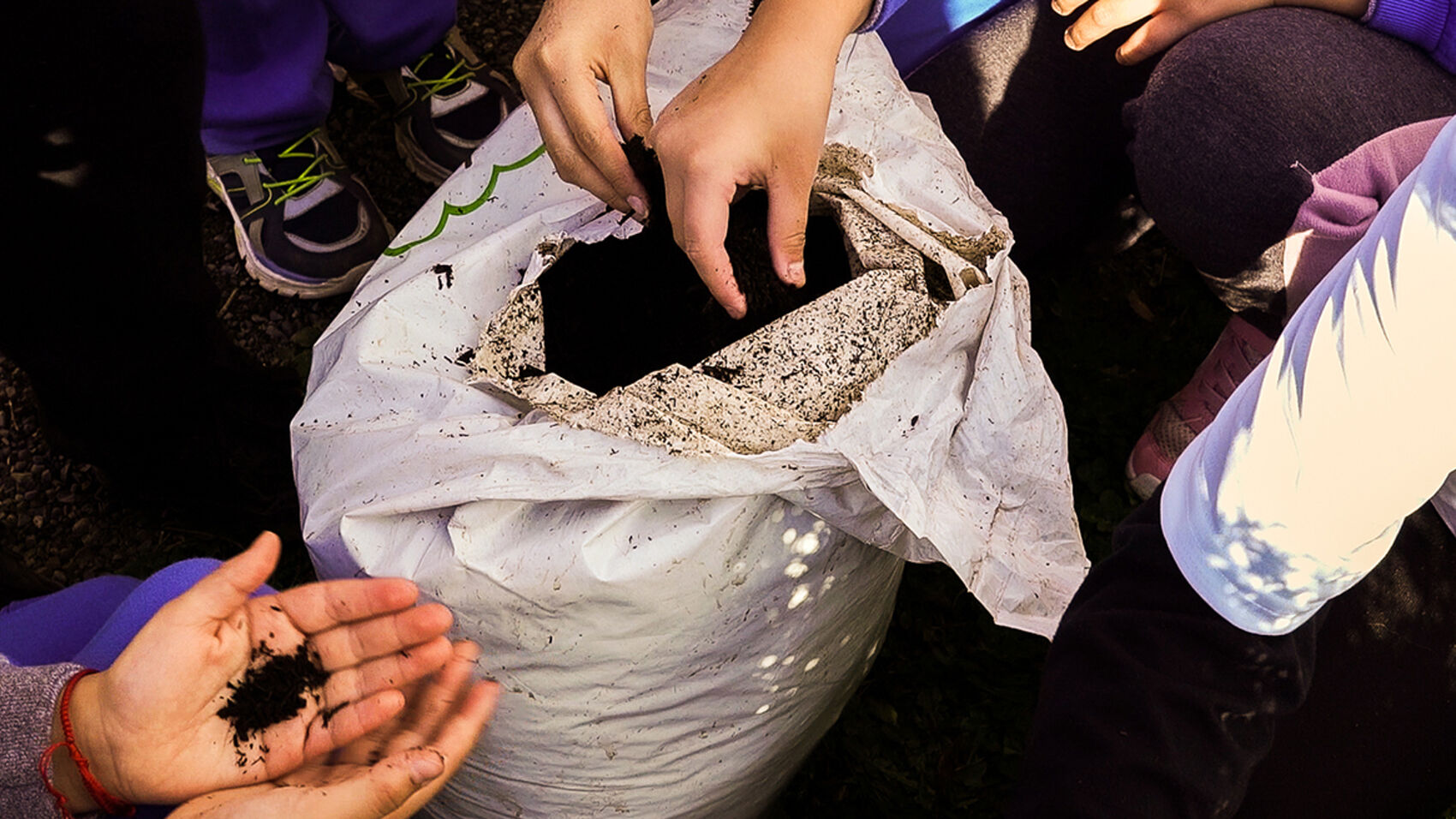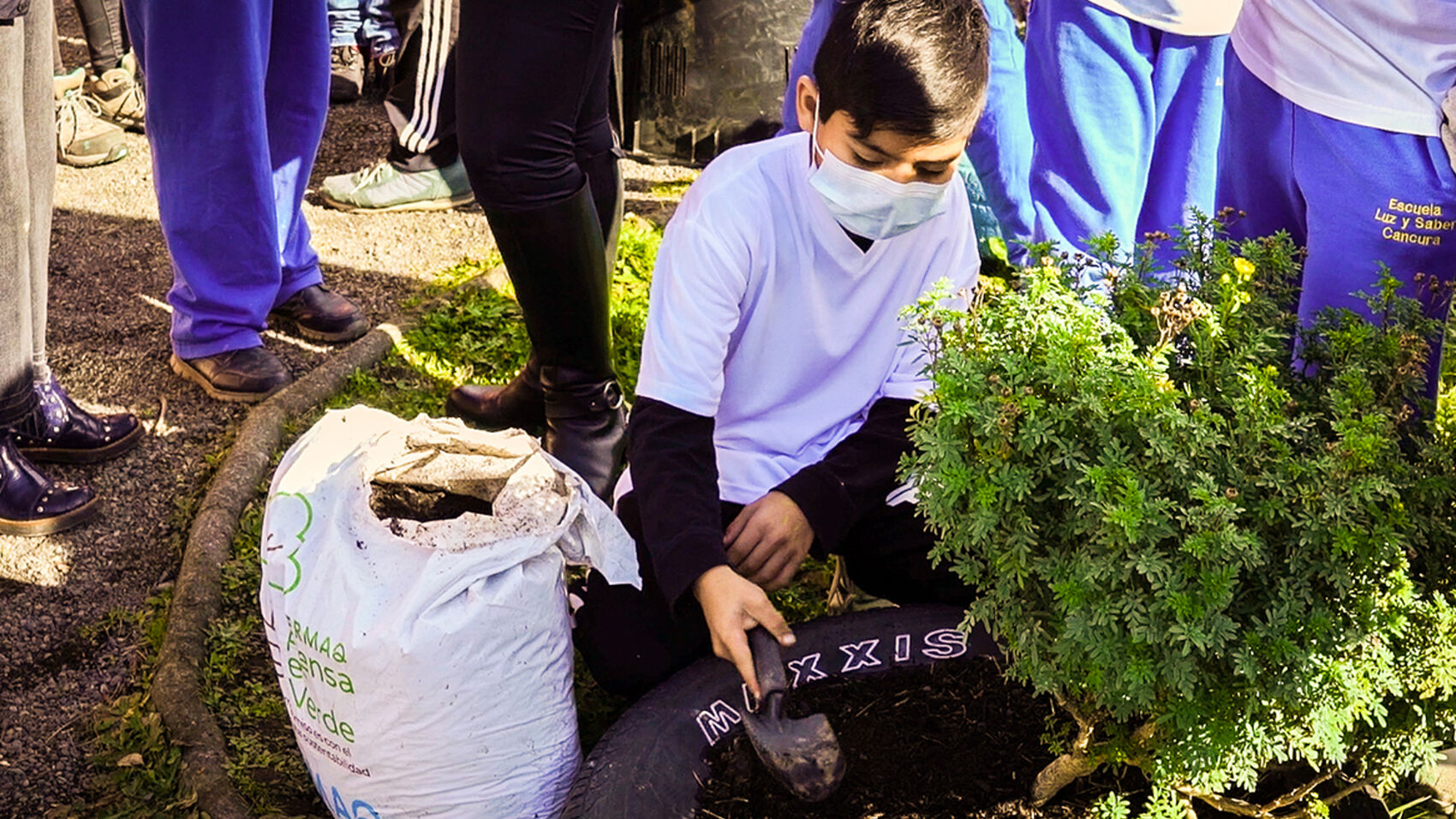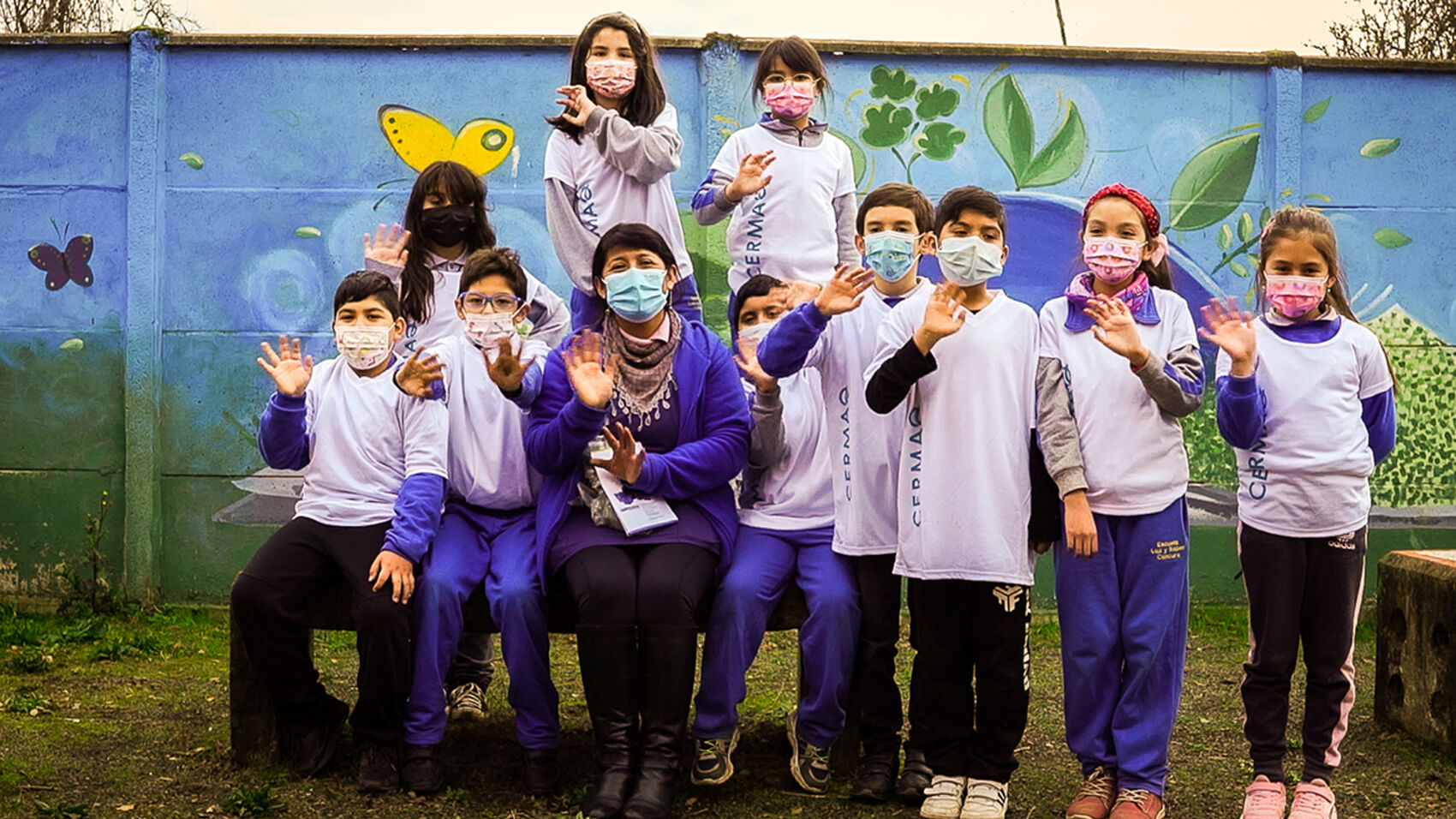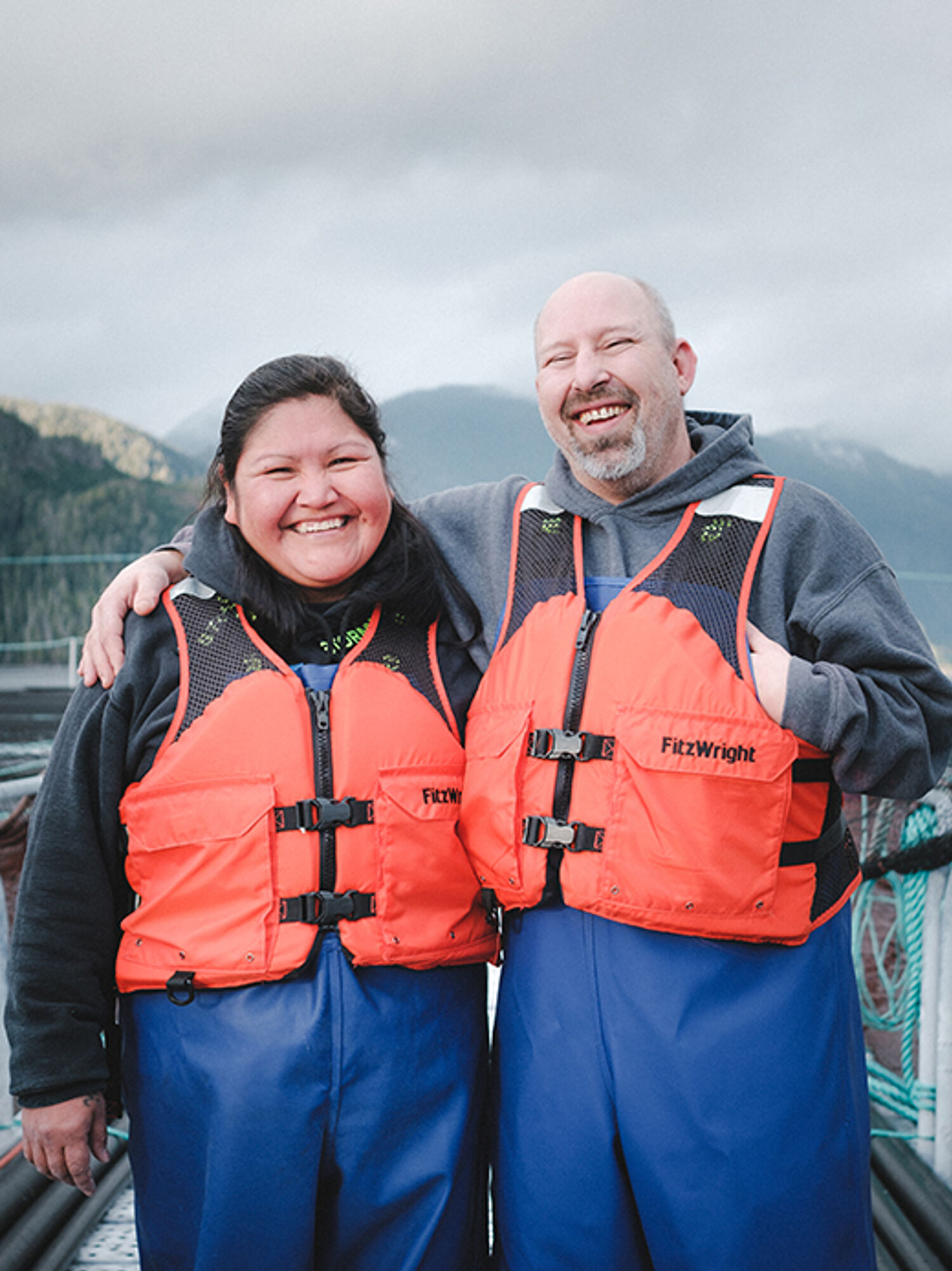Sea the solution / The Social Challenge
Cermaq’s Think Green campaign aims to minimise waste and optimise the use of resources for everybody.
Nutrients from the salmon industry can provide prime growing conditions for seaweed, which in turn can be used as feed stock for fish. Transforming salmon faeces into compost helps to improve soil quality for local farmers.
“We are all a part of a community, and we believe we must find ways to connect through initiatives that bring added value to everybody,” says Berta Contreras, Technical Manager at Cermaq Chile
“We understand that we are part of an ecosystem, and we believe in inviting in our suppliers and neighboring communities along with other interested parties to find better ways of using the resources”
–Berta Contreras, technical manager at Cermaq Chile

From sludge to compost
The compost project initiated by Cermaq Chile makes use of resources that would otherwise go to waste and involves turning fish sludge into fertiliser for soil. This is also a way for Cermaq to connect with the local community and give something back
Sludge
= mud mixture made up of fish feces, fish food remains and moisture
“I am very happy with this initiative that seeks to be a great contribution to the environment and our community. Learning that Cermaq cares for our land and its communities has also been a pleasant surprise for us. We are grateful that the company has reached out to our facility and our environmentally conscious children,” says Nancy Alcahual, a teacher and Head of Environment at Luz y Saber school.

As sludge is a part of the process in the salmon industry, this is the perfect opportunity for Cermaq to minimise waste and keep valuable resources in the industrial loop.“
The compost project is an example of how we want to work together with partners and the community around us to ensure these goals,”Contreras says.
Making natural compost
A local Chilean composting company collects organic wastefrom salmon farm sand converts it into compost. This natural fertilizer is then used to enrich agricultural crops or add nutrients to reforestation zones or parks.
“First, we evaluate the quality of the sludge which must meet certain conditions. We need to define whether it’s wet or dehydrated,water content by percentage, and amount produced per month and year,to make sure that we are aligned with regulatory requirements,”Contreras says.
At the composting company the sludge is then mixed with the necessary structuring material, like sawdust, to reach a pre-defined consistency. It goes through a natural maturing process and the final product is monitored by the SAG (Agricultural and Livestock Service), to authorise application for agricultural use.
Process
- Sludge is mixed with structuring material
- 6-8 weeks in a container with strict temperature and oxygen-level control, recirculating hot air
- 2 weeks maturing outside
- Different types of compost can be obtained depending on sieving
If we do the maths, 12 tonnes of sludge mixed with 6 tonnes of structuring material like sawdust provides about 5,4 tonnes of ready-to-use compost. This means that from100% sludge you get 30% of compost. 40% of the left-over mixture is introduced back into the process for further use.
“I think we can do great things together. If we unite, we can motivate many more, so that together we can motivate these children to have an increasingly green heart”
–Nancy Alcuhal, teacher and Head of Environment at Luz y Saber school

The circle of life with seaweed
It’s the same mindset about being a part of an ecosystem that led to the kelp project run by Cermaq Norway and Folla Alger (algae). The two companies are currently researching the mutual benefits that kelp and farmed salmon can enjoy.
“We are growing seaweed in connection with salmon farms. This way, emissions of nutrients from the fish farm are absorbed by the seaweed and our future goal is that the seaweed can be used for energy production or for animal feed,” says Torben Marstrand, CEO of Folla Alger.
Folla Alger's goal is to develop an integrated aquaculture and sustainable form of operation connected to all farmed-salmon locations, as well as to produce enough kelp to become a supplier of Norwegian-produced feed ingredients
How green is it?
This project is still in an early-phase trial, but small-scale experiments indicate that up to 50% of nitrogen can be removed from waste generated in salmon production. Furthermore, kelp can contribute to significant CO2 capture. 1 km2 can absorb 3,000 tonnes of CO2 annually, or around the annual CO2 emissions of 250 diesel cars.
The benefits from seaweed
- Algae binds CO2
- Algae reduces the environmental footprint of fish farming by absorbing nutrients
- More efficient use of areas already being used for production
Sintef Ocean is responsible for R&D in the kelp project where NTNU and Nord University also participate in this work. Cermaq will run the salmon production on the site and Folla Alger is responsible for kelp cultivation.
Kelp, seaweed, algae – the new ingredients
New ingredients are not making much of an impact in fish-farming today, but that doesn’t mean the situation will not change.
“There is so much exciting development going on right now. Everybody wants to do something about the challenges and CO2-emissions related to today’s feed, Marstrand says. Right now, micro algae and insects are what we have studied the most, but I do believe that the proportion of “new ingredients” in fish feed will increase year by year.”
And the reason he believes this is not only the political push for this development but also because the industry itself has recognised that there is great potential for increasing sustainability in this area
What to read next

Working together to get better
Engaging in international cooperation is needed to create frameworks and agreements that can contribute to ensuring that fish farming is sustainable